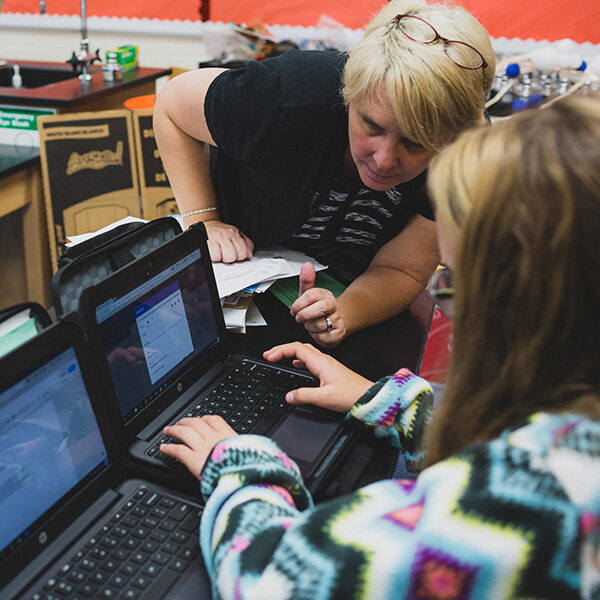
A portion of the following is an excerpt from the new ASCD book, Learning Transformed: 8 Keys to Designing Tomorrow’s Schools, Today.
For decades, school leaders have discussed “the need” to integrate technology. The problem with these conversations has been a lack of focus on the why and how technology can support a learning transformation. The greatest technology in the world will not garner hypothesized improvement if a concerted effort to change pedagogy isn’t the foundation. As evidenced in various OECD reports on the topic, the problem isn’t the technology itself per se but the lack of high-quality pedagogy, which often stems from a lack of high-quality professional learning to support educators with effective implementation.
There is a need not only to better prepare teachers and administrators with the skills and mindset to usher in needed change but also to study and showcase powerful examples of success. Showing teachers what “high-quality” actually looks like is key. Professional learning must help educators do what they already do—better. It can’t be hypothetical, especially when focused on technology and innovation. Practices, skills, and techniques need to be real, be proven, and leave educators with a sense that they can implement them to improve learning outcomes.
Constant hoopla around technology in education has resulted in an arms race of sorts where the use of the latest flashy tool trumps effective, meaningful long-term use. The same can be said about fluffy, pie-in-the-sky ideas that do not take into account the real challenges that many districts and schools face. The good news here is that high-quality digital transformation can and has succeeded in many schools around the world. For such transformation to occur, there needs to be an emphasis on instructional design, digital pedagogical techniques, and the development of better assessments aligned to higher standards. This might not be flashy or newsworthy, yet it is nonetheless crucial in establishing systemic change that can be scaled beyond isolated pockets of excellence in any given school. It is important to note that this dilemma is not only specific to technology but also to innovation. There must be a concerted focus on the why, the how, and deep evidence of results.
In addition to professional learning, we must also be more critical of what we see and hear when engaged in the ed-tech debate. For technology to be taken seriously as a tool to support and enhance teaching and learning, we must no longer accept assumptions and generalizations as to what it actually does. A primary goal of education should be to have students empowered to own their learning, create artifacts that demonstrate conceptual mastery, use their voice, be responsible in online spaces, and connect with the world in meaningful and authentic ways. Both of us have served in various teaching and leadership roles, and we want teachers and administrators to utilize technology and innovative practices to improve teaching, learning, and leadership. However, the school leader in each of us also understands the need to balance this with clear, evidence-based results. This is a reality for every teacher and administrator that cannot be ignored. It is important to show how students apply what they have learned in relevant ways that are aligned to the highest levels of knowledge taxonomy. Listening to someone share how a particular tool has “transformed education” simply doesn’t cut it anymore.
The next step is to connect practices to results that prove—beyond assumptions and generalizations—that technology positively affects teaching and learning. It is important to remember that if teaching, learning, and leadership don’t evolve, technology and innovation will never have the type of impact we expect and that are possible. It is not a matter of if but when key stakeholders and decision makers will ask for indicators of evidence that illustrate positive effects on student learning outcomes, elements of school culture, and community engagement. Let’s face it, they should be asking these questions already. The stakes are too high, and we need to develop students who not only are divergent thinkers prepared for college and careers but also possess the confidence and drive to follow their interests and passions. Simply put, when integrating technology, there needs to be a Return on Instruction (ROI) that results in evidence of improved student learning outcomes.
We’d love to hear your thoughts! Use #LT8keys to continue the conversation online.
Opinions presented in this blog post are those of the author and do not necessarily represent TLA’s opinion, nor should be considered an endorsement by TLA of any organization or product.

